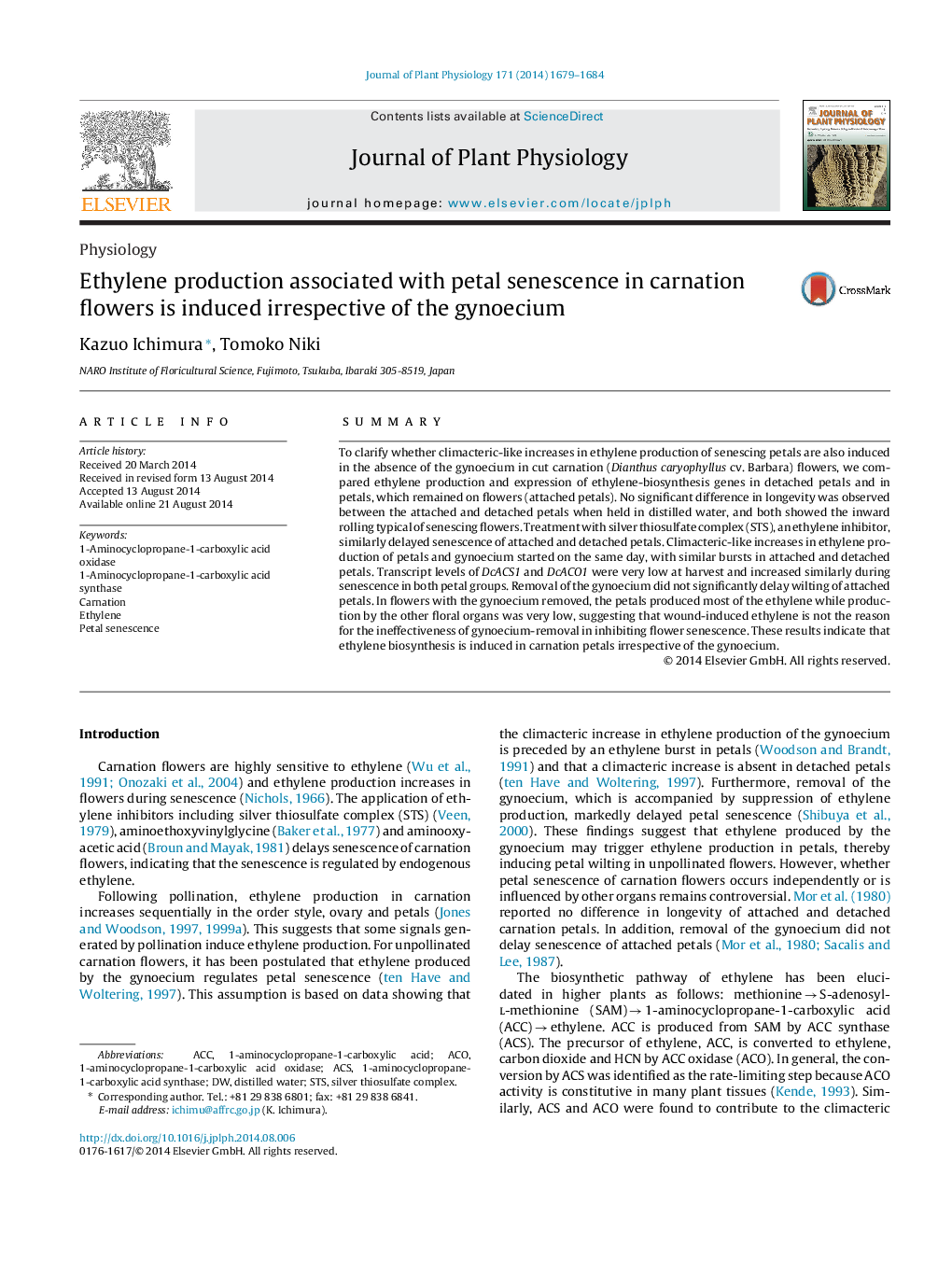| کد مقاله | کد نشریه | سال انتشار | مقاله انگلیسی | نسخه تمام متن |
|---|---|---|---|---|
| 2055821 | 1075779 | 2014 | 6 صفحه PDF | دانلود رایگان |
SummaryTo clarify whether climacteric-like increases in ethylene production of senescing petals are also induced in the absence of the gynoecium in cut carnation (Dianthus caryophyllus cv. Barbara) flowers, we compared ethylene production and expression of ethylene-biosynthesis genes in detached petals and in petals, which remained on flowers (attached petals). No significant difference in longevity was observed between the attached and detached petals when held in distilled water, and both showed the inward rolling typical of senescing flowers. Treatment with silver thiosulfate complex (STS), an ethylene inhibitor, similarly delayed senescence of attached and detached petals. Climacteric-like increases in ethylene production of petals and gynoecium started on the same day, with similar bursts in attached and detached petals. Transcript levels of DcACS1 and DcACO1 were very low at harvest and increased similarly during senescence in both petal groups. Removal of the gynoecium did not significantly delay wilting of attached petals. In flowers with the gynoecium removed, the petals produced most of the ethylene while production by the other floral organs was very low, suggesting that wound-induced ethylene is not the reason for the ineffectiveness of gynoecium-removal in inhibiting flower senescence. These results indicate that ethylene biosynthesis is induced in carnation petals irrespective of the gynoecium.
Journal: Journal of Plant Physiology - Volume 171, Issue 18, 15 November 2014, Pages 1679–1684
